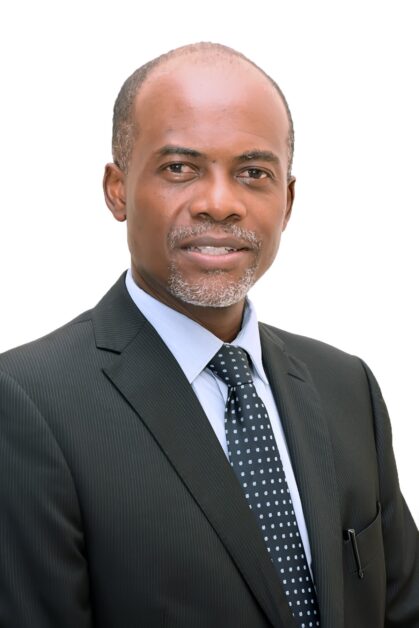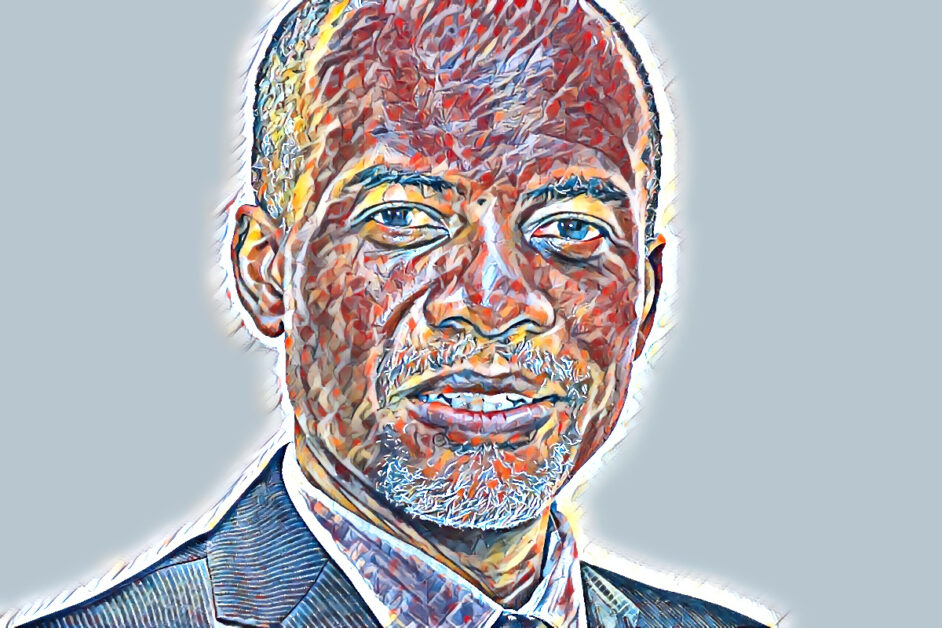After serving two terms in office, Keith Kalyegira will this December step down. In this interview with CEO East Africa’s Muhereza Kyamutetera, he shares a variety of insights on his time at the capital markets authority, what needs to be done to accelerate the growth of capital markets and what is next after CMA.
Let us start with a recap of the last 10 years at the helm of the Capital Markets Authority (CMAs); what would you say were your highs, lows, and key milestones/achievements?
I think the main achievement that I’m proud of is the decision we made to focus our public education on collective investment schemes or unit trusts, and the results speak for themselves with the growth that we’ve talked about in several different news articles. The UGX 2 trillion mark has been exceeded. The number of investors, 60,000, has been exceeded. And the industry is at a point where they can now take over their own public education campaigns. I think what they just need to do more is to underline the fact that they are regulated by a strong regulator because that, I believe, will send a strong signal to the public that their money is safe.
The second highlight is obtaining a pragmatic understanding of what the capital markets can and cannot do from the perspective of economic management. And I’ll talk about this a little bit later. The downside has been not getting cooperation from some people but those are the travails of leadership, not always shall we obtain cooperation but it’s the job of every leader to be persuasive. The key is that we make sure that the people whom we license or approve have the capacity to sustain their business without recourse or relying on shareholder capital. That, I think, is going to be one of the main basis for licensing going forward. Before approvals or authorisations or licenses are granted, the strength of the business plan is going to be a key factor before licenses are given.
I have had the privilege of chairing a subcommittee on increasing listings in Africa and the Middle East in which I came to the strong realisation that there’s a strong correlation between the level of economic growth as measured by GDP per capita and the level of capital markets activity. Indeed, my conclusion is that the two are related, and you can’t expect a lot of capital market activity when your level of GDP per capita is still below USD 3,000. So that, I hope, will help manage the expectations of the public and all the people who keep asking questions about why our capital markets are not well developed. Capital markets follow economic growth.

I’ve also been disappointed by the realisation that most primary listings in Africa and the Middle East are exit opportunities for majority shareholders, which could be government or private equity funds, as opposed to opportunities to raise capital to finance the growth of the companies. That has also made me realise that it’s important that a market is created where those intending to raise capital to finance growth can form public companies and issue prospectuses for debt or equity. CMA will support this initiative.
To issue an information memorandum or a prospectus to the public to raise capital for your company, through a public offer does not mean your company must list. So, we need to see a culture of companies intending to raise capital doing this. This will reduce pressure on the banking sector. This will help raise long-term patient capital because equity doesn’t have time limits for repayment, and equity does not create repayment obligations to shareholders other than through dividends. So, I hope my successor can make this one of their priorities to make capital markets a more reliable source of raising patient capital for businesses.
Ten years ago, when you started this job, I’m sure there were things you wanted to do – how much of that is done?
When I started this job ten years ago, I kept thinking about listings as one of the many indicators of success. But I realised quickly that this is the business of the Stock Exchange, not the regulator. The public should be worried about a regulator that is driving listings because of the potential conflict of interest.
We’ve seen a decline in share prices in the secondary market despite valuations to the contrary. While most of the risks that have caused these secondary market price declines were disclosed in the prospectuses, that doesn’t take away the fact that it has affected the public’s expectation that every IPO is followed by an increase in the valuation of companies.
The relative illiquidity of the equity market has also been a source of concern. We have issued dealer’s licenses, but we’ve not seen the level of dealing increase, so we hope we shall see the dealers take up this challenge more and put their capital behind the activity around dealing. Of course, they will have to work with the Stock Exchange leadership to have a clear understanding of what is allowable and what is not allowable in terms of price movements. However, the stock exchange must do more to educate the public on what to expect from their brokers.
For dealing to be further facilitated, we have taken the step to allow for securities lending in the amendments to our Act. This will help those who have views on whether a company is undervalued or overvalued to take positions which will help the liquidity of these shares.
At a personal level, you have about two decades of Uganda’s capital markets, right from privatisation, to the private sector and then government/regulator. How do you describe the journey?
Indeed, I have been in touch with capital markets from the time of privatisation through being a trustee of several pension funds of state-owned enterprises. I have had the responsibility of trying to improve the performance of public enterprises before. It’s been an interesting and worthwhile journey. I’ve got no regrets about having left the private sector in 2003 to join the public sector. I knew and had a desire to make a difference and make a meaningful contribution to the development of our country, and I’m grateful that I was allowed to do this. It’s very satisfying, even if it’s not as rewarding as being in the private sector.
I would like to urge more people not to be bystanders in contributing to the improvement and the growth of our economy but to be active participants. Indeed, that’s one of the things I’d like to do, and I’ve always wanted to ensure that there’s justice in the disbursement of capital. This is a vision I have not quite achieved but will continue to lend my experiences to raise and support social impact investing and other commercial ventures.
Being a regulator requires a sound sense of judgement based on an objective assessment of risks and courage to make swift and effective decisions. It is not easy to continually balance the core statutory investor protection mandate with the market development expectation. I have learnt though that the two are not mutually exclusive in a market that is underpinned by trust and confidence.
In these 10 years, what have you learned? What kind of brief will you be giving to the person coming after you?
They shouldn’t spend the first three or four years of their tenure thinking about how to increase listings. We have a strategic plan in place. It needs some modifications in terms of initiatives, but the overall objectives remain the same: market development, and strengthening supervision to give the public confidence that a sound and capable regulator is supervising their investments. Strengthening the institutional capacity of the organisation in terms of communication and public relations; stakeholder engagement; financial management; human resource development and talent management, and retention; electronic data management and leveraging IT to improve our efficiency and effectiveness remains the third core objective. The initiatives under each of these objectives need to be continuously reviewed on an annual basis to get the maximum impact out of our efforts and resources.

Every regulator, everywhere in the world, complains about insufficient resources, from Australia to South Africa to the US, but it’s the job of the regulator to ensure that the resources provided are utilised as efficiently as possible and directed where the most impact will be obtained in every activity, be it licensing, supervision, enforcement, or market development. ‘The Four Disciplines of Execution, a book by Chris McChesney, Sean Covey & Jim Huling’ is a good read on prioritisation of effort,’ It’s our role to prioritize this to achieve the maximum benefit from the resources we have. Given the macroeconomic challenges that the world is facing and the increased reliance on domestic resources, I hope that some of the ideas that have been shared with stakeholders and the Ministry of Finance around continuing to reform the pension sector to increase the depth of domestic savings in our country will be pursued to their completion, for the sake of those retiring and for the sake of the economy. We really shouldn’t be paying lump sums on retirement considering that more than 97% of recipients of lump sums don’t have these savings within 3 years of receipt.
So what is next for you after the Capital Markets Authority?
Once I leave the CMA, my broad, short to medium-term vision is to be an intermediary between those who have money and those who need money from the perspective of being an impact/social economic investor. I think the levels of poverty around us and the level of need, and yet the potential from an entrepreneurship perspective provides a great opportunity for myself and many others who have the desire to see transformation in our economy and society to be active participants.
The world has a lot more capital than it needs, with most of this capital concentrated in the West. Those people also need an outlet to make a meaningful contribution to society. I think the income inequality in the world is so obvious and it’s increasing. We need to help and make our contribution to reducing this inequality because I know that small amounts of money can have huge impacts on the lives of people in rural and peri-urban areas. We need to make our contribution to reducing unemployment by coming up with meaningful programs that can impact the lives of our countrymen. If a thousand men and women in this country decided to make that their sole vision and mission in life, we can all put our forces, our hands, our energies, and our experience together to help support the government in its initiative to improve the lives of its citizens and not just be commentators or critics. We need to be part of the solution. Ten years in the running, CMA has been a very interesting journey. It’s been short because I feel I’m just getting to a point where I think I know exactly what needs to be done to make the greatest leverage on the development of our capital markets, but I also understand that the framers of the law felt it was important to pave way for someone else. That, I suppose is part of the reason there are substitutes in team sports.
